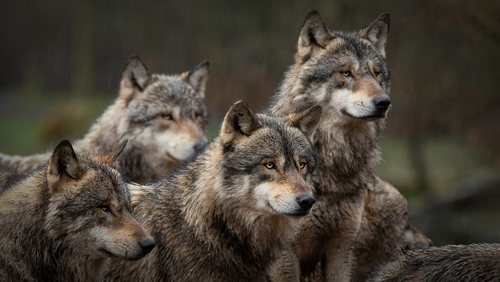
What is a Canine?
Canines are best described as carnivorous dog-like mammals and more properly known as canids. All existing species of canines belong to the Canidae family. There are three subfamilies within the Canidae family, however, two of these groups are extinct. All living canids are of the genus ‘Canis’, which includes all breed and species of domestic dogs, wolves, foxes, and coyotes.
Domestic Dogs
The Fédération Cynologique Internationale (FCI), or World Canine Organization, recognises some 340 breeds of dog. These range from the enormous Great Dane to the diminutive Chihuahua. Surprisingly, all domestic dogs are of a single species (Canis familiaris). Genetic studies have shown that all dogs, both ancient and modern, share a common ancestry. Dogs are thought to be descendants of an ancient, extinct wolf, that is distinct from today’s wolf lineage. The present-day grey wolf is the dog’s nearest living relative. Both are thought to have diverged from an ancient species of wolf that died out some 15,000 to 40,000 years ago.

The labrador is one the world’s commest domestic dogs. Image credit: Jagodka/Shutterstock.com
Wolves
The wolf (Canis lupus) is also known as the ‘grey wolf’, the ‘common wolf’, and the ‘timber wolf’. It is the largest extant species of wild canine and native to both Eurasia and North America. There are only two other recognised species of wolf, the red wolf (Canis rufus), native to North America, and the Ethiopian wolf (Canis simensis). Both are the only members of their respective genus. It is only recently that the red wolf was confirmed as a distinct species of wolf. It was previously thought by some experts to be either a subspecies of the grey wolf or a coyote hybrid.
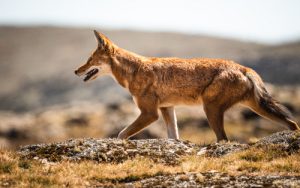
The Ethiopian Wolf (Shutterranger/Shutterstock.com)
Similarly, some experts once believed that there were at least 32 subspecies of grey wolf in the North America alone. However, recent genetic studies have led to rethinking which now acknowledges only four subspecies of the wolf. These are the Arctic wolf, the great plains wolf, the Mexican wolf, and the North-western wolf. There are also 7 recognised subspecies of grey wolves which live outside the North American continent. These are the Tundra, Arabian, Steppe, Mongolian, Himalayan, Eurasian, and Indian wolves.
Foxes
Foxes are generally smaller than the other wild species of the Canine, such as wolves and coyotes. While there are 23 species of extant foxes, only 12 are of the genus ‘Vulpes’. The latter are most commonly referred to as “true foxes”. The largest and most common of the true foxes is the ‘red fox’ (Vulpes vulpes). Its range stretches across the entire Northern Hemisphere, including most of North America, Europe, Asia, and parts of North Africa. There are also around 7 million red foxes in Australia. They were introduced there in the mid-19th century by the British for recreational hunting.
Some 45 subspecies of red fox have been identified in the recent past. However, most experts now consider that Vulpes vulpes is merely a highly variable species across its range. Red foxes in Europe, Asia, and North Africa are now generally considered a single species. In North America, the status of the red fox is less clear, not least by the introduction of the European red fox from the mid-17th century onwards. The American red fox is currently considered differently by different groups. Some think it to be the same species as the European red fox. However, others consider it a subspecies, and some, a different species. In the two latter cases, it has 9 recognised subspecies.
The ‘silver fox’ and the ‘cross fox’ are considered variants of the red fox and thus are also of the genus Vulpes Vulpes. Other examples of the ‘true’ fox include the Swift Fox (Vulpes velox), common to North America, and the Arctic Fox (Vulpes lagopus). Non-Vulpes foxes include the North American grey fox, the bat-eared fox, and the crab-eating fox.
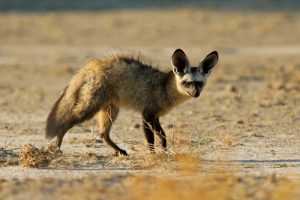
The Bat-eared Fox (EcoPrint/Shutterstock.com)
Coyotes
The coyote, also known as the ‘prairie wolf’ or the ‘brush wolf’, is a species of wild canine native to North and Central America. The coyote is closely related to the wolf, particularly the eastern wolf and the red wolf. However, it’s generally smaller in stature than its lupine cousin. The coyote can be found in all parts of the USA (except Hawaii), most of Canada, Mexico, Honduras, and El Salvador.
There is only one species of coyote (Canis latrans) but 19 recognised subspecies. Their name generally reflects the region or type of habitat where it is most commonly found. Coyote subspecies include the Northern coyote (Canis latrans incolatus), the Tiburon Island coyote (Canis latrans jamesi), and the Plains coyote (Canis latrans latrans).
Jackals
There are three distinct species of the ‘jackal’. The side-striped jackal (Canis adustus), the black-backed jackal (Canis mesomelas) are both found in sub-Saharan Africa. The Golden jackal (Canis aureus) is found across South Asia, Central Asia, and the Balkans region.
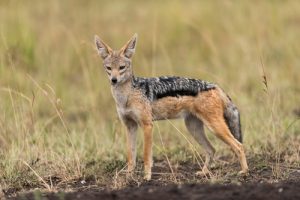
The Black-backed Jackal (Sharon Haegar/Shutterstock.com)
Other Canines
Maned Wolf
The maned wolf (Chrysocyon brachyurus) is a large member of the canine family. It’s unique in as much as it is not closely related to any other living canines. It’s a solitary animal only found in the remote plain areas of central South America. The maned wolf is generally recognised as an endangered species.
Raccoon Dog
The raccoon dog, also known as the ‘tanuki’ or ‘neoguri’, is indigenous to East Asia. It’s the only member of its genus, whose closest relative is the true fox. It takes its name from the fact it has facial similarities to the North American raccoon. There are currently five recognised subspecies of the raccoon dog. They are generally only found in Japan, Korea, and China. However, the Ussuri raccoon dog has been recently introduced to some parts of Eastern Europe and Western Russia.
Dhole
The dhole (Cuon alpinus), is also known as the Asian wild dog, the Asiatic wild dog, the Indian wild dog, the whistling dog, and the red dog. The medium-sized Canid is native to Central, South, East, and Southeast Asia. With numbers estimated at around 2,500 adults, the dhole is widely recognised as an endangered species. There are currently 7 recognised subspecies of dhole but studies have shown that their DNA to be very similar.
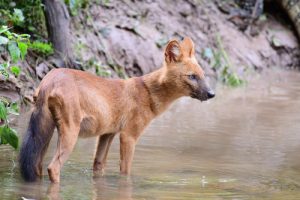
The Dhole (Saichol Campan/Shutterstock.com)
African Wild Dog
The African wild dog (Lycaon pictus) is known by several names, including the Cape hunting dog and the painted dog. Its scientific name translates as to English as “painted wolf”. The African wild dog’s natural habitat is the open plains and sparse woodlands of sub-Saharan Africa. Susceptible to disease and extermination by farmers, the African wild dog population is in serious decline. Resultingly, it is currently recognised as an endangered species.
Dingo
The dingo (Canis lupus dingo) is a medium-sized canid found across much of Australia. It’s been found to be closely related to the New Guinea singing dog. Recent scientific studies concluded that both species were feral dogs, having the same linage as domestic dogs. However, under Australian law, the dingo is recognised as a wild animal and has protected status in several states.
Bush Dog
The bush dog (Speothos venaticus) is a canine found across Central and South America. Though the bush dog has an extensive range, it is rare in most regions, except Suriname, Guyana, and Peru. Also known as the vinegar dog, the vinegar fox, and the water dog, the bush dog is the only surviving species of its genus.
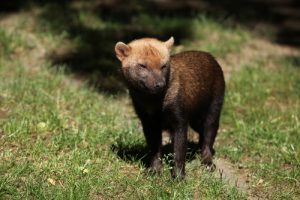
The Bush Dog (Vladimir Wrangel/Shutterstock.com)
Short-eared Dog
The short-eared dog (Atelocynus microtis) is also known as the short-eared fox and the small-eared dog. The elusive canid fox-like species is unique to the Amazonian basin and the only species assigned to its genus. The recent decline of the short-eared dog has been attributed to feral dog diseases and a loss of habitat. The loss in numbers is such that it is now recognised as a near-threatened species.
Did you know?
Contrary to popular belief, the hyena (or hyaena) is not scientifically recognised as a wild dog. Hyenas belong to the Hyaenidae family, which excludes them as a canine. The four existing species of hyena are; the spotted hyena (Crocuta crocuta), the aardwolf (Proteles cristata), the brown hyena (Hyaena brunnea), and the striped hyena (Hyaena hyaena). While the hyena does display similar behavioural characteristics to that of a dog, especially when hunting, it has more traits that are akin to that of the cat.
I hope you found our article on the animal world informative? If so, why not sign up and join our growing community at Five Minutes Spare.
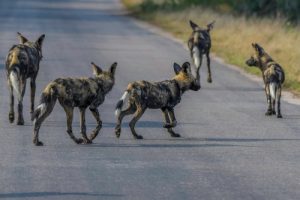


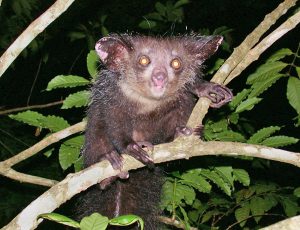


… [Trackback]
[…] Read More here on that Topic: fiveminutesspare.com/education/a-quick-guide-to-canines/ […]
… [Trackback]
[…] Find More to that Topic: fiveminutesspare.com/education/a-quick-guide-to-canines/ […]
… [Trackback]
[…] There you will find 62988 additional Information on that Topic: fiveminutesspare.com/education/a-quick-guide-to-canines/ […]
… [Trackback]
[…] Read More on that Topic: fiveminutesspare.com/education/a-quick-guide-to-canines/ […]
… [Trackback]
[…] Read More on that Topic: fiveminutesspare.com/education/a-quick-guide-to-canines/ […]
… [Trackback]
[…] Find More on to that Topic: fiveminutesspare.com/education/a-quick-guide-to-canines/ […]
… [Trackback]
[…] Info on that Topic: fiveminutesspare.com/education/a-quick-guide-to-canines/ […]
… [Trackback]
[…] There you will find 72403 additional Info on that Topic: fiveminutesspare.com/education/a-quick-guide-to-canines/ […]
… [Trackback]
[…] Find More on on that Topic: fiveminutesspare.com/education/a-quick-guide-to-canines/ […]
… [Trackback]
[…] Read More Info here to that Topic: fiveminutesspare.com/education/a-quick-guide-to-canines/ […]
… [Trackback]
[…] Find More Info here on that Topic: fiveminutesspare.com/education/a-quick-guide-to-canines/ […]
… [Trackback]
[…] Info on that Topic: fiveminutesspare.com/education/a-quick-guide-to-canines/ […]
… [Trackback]
[…] Read More here to that Topic: fiveminutesspare.com/education/a-quick-guide-to-canines/ […]
… [Trackback]
[…] Read More on to that Topic: fiveminutesspare.com/education/a-quick-guide-to-canines/ […]
… [Trackback]
[…] Information on that Topic: fiveminutesspare.com/education/a-quick-guide-to-canines/ […]
… [Trackback]
[…] Read More here to that Topic: fiveminutesspare.com/education/a-quick-guide-to-canines/ […]
… [Trackback]
[…] Read More on that Topic: fiveminutesspare.com/education/a-quick-guide-to-canines/ […]
… [Trackback]
[…] Information to that Topic: fiveminutesspare.com/education/a-quick-guide-to-canines/ […]
… [Trackback]
[…] Read More on that Topic: fiveminutesspare.com/education/a-quick-guide-to-canines/ […]
… [Trackback]
[…] Read More on that Topic: fiveminutesspare.com/education/a-quick-guide-to-canines/ […]
… [Trackback]
[…] Find More on that Topic: fiveminutesspare.com/education/a-quick-guide-to-canines/ […]
… [Trackback]
[…] Information on that Topic: fiveminutesspare.com/education/a-quick-guide-to-canines/ […]
… [Trackback]
[…] Info on that Topic: fiveminutesspare.com/education/a-quick-guide-to-canines/ […]
… [Trackback]
[…] Find More here to that Topic: fiveminutesspare.com/education/a-quick-guide-to-canines/ […]
… [Trackback]
[…] Read More Info here to that Topic: fiveminutesspare.com/education/a-quick-guide-to-canines/ […]
… [Trackback]
[…] Find More to that Topic: fiveminutesspare.com/education/a-quick-guide-to-canines/ […]
… [Trackback]
[…] Read More on on that Topic: fiveminutesspare.com/education/a-quick-guide-to-canines/ […]
… [Trackback]
[…] Information to that Topic: fiveminutesspare.com/education/a-quick-guide-to-canines/ […]
… [Trackback]
[…] Find More Information here to that Topic: fiveminutesspare.com/education/a-quick-guide-to-canines/ […]
… [Trackback]
[…] Read More to that Topic: fiveminutesspare.com/education/a-quick-guide-to-canines/ […]
… [Trackback]
[…] Find More to that Topic: fiveminutesspare.com/education/a-quick-guide-to-canines/ […]
… [Trackback]
[…] Read More Info here on that Topic: fiveminutesspare.com/education/a-quick-guide-to-canines/ […]
… [Trackback]
[…] Read More Info here to that Topic: fiveminutesspare.com/education/a-quick-guide-to-canines/ […]
… [Trackback]
[…] Find More to that Topic: fiveminutesspare.com/education/a-quick-guide-to-canines/ […]
… [Trackback]
[…] Read More to that Topic: fiveminutesspare.com/education/a-quick-guide-to-canines/ […]
… [Trackback]
[…] Read More Info here on that Topic: fiveminutesspare.com/education/a-quick-guide-to-canines/ […]
… [Trackback]
[…] Read More on that Topic: fiveminutesspare.com/education/a-quick-guide-to-canines/ […]
… [Trackback]
[…] Here you can find 3554 additional Information on that Topic: fiveminutesspare.com/education/a-quick-guide-to-canines/ […]
… [Trackback]
[…] Info on that Topic: fiveminutesspare.com/education/a-quick-guide-to-canines/ […]
… [Trackback]
[…] There you can find 64828 additional Information on that Topic: fiveminutesspare.com/education/a-quick-guide-to-canines/ […]
… [Trackback]
[…] Find More here to that Topic: fiveminutesspare.com/education/a-quick-guide-to-canines/ […]